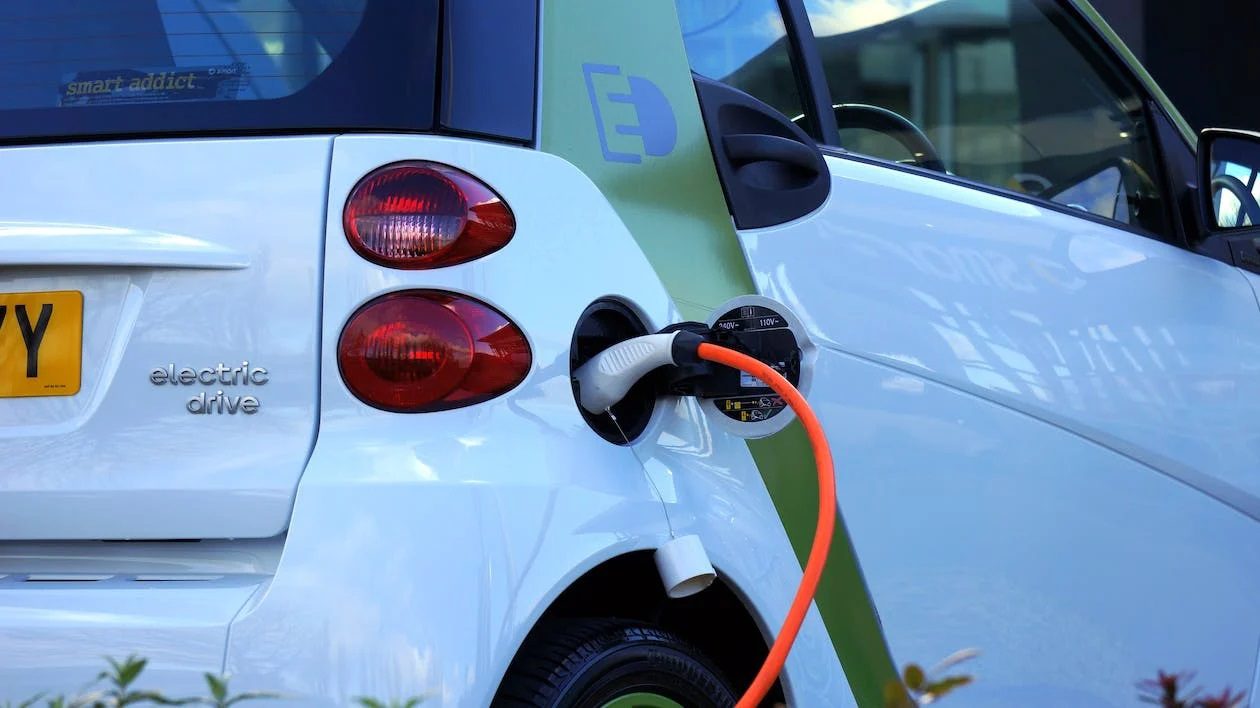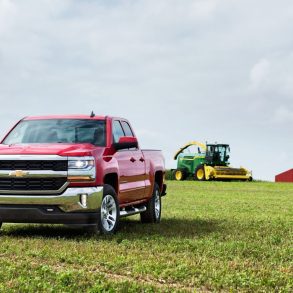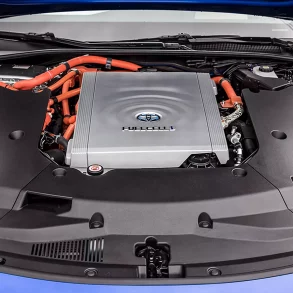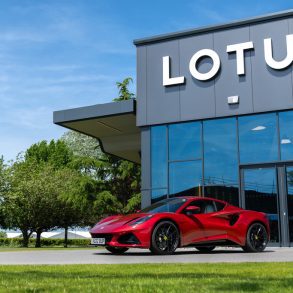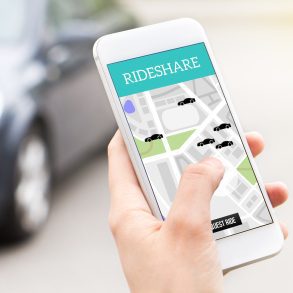You’ve probably heard it said many times in the past half decade, that we, as a Western society, are neck deep in “The EV Revolution.” In North America, that statement really does ring true, with quarterly growth since 2021 of both pure battery-electric and hybrid powertrains never dropping below 5.5%. This is mostly because North America, at the moment, is the largest market for electrically powered vehicles.
However, even with that massive surge of interest and purchases over the past 5 years, EV’s still make up less than 7% of all cars and trucks in North America, and it’s estimated that they won’t breach the 10% total vehicles barrier until at least 2027 or 2028. The news media has latched onto this and started some doom and gloom headlines in recent months.
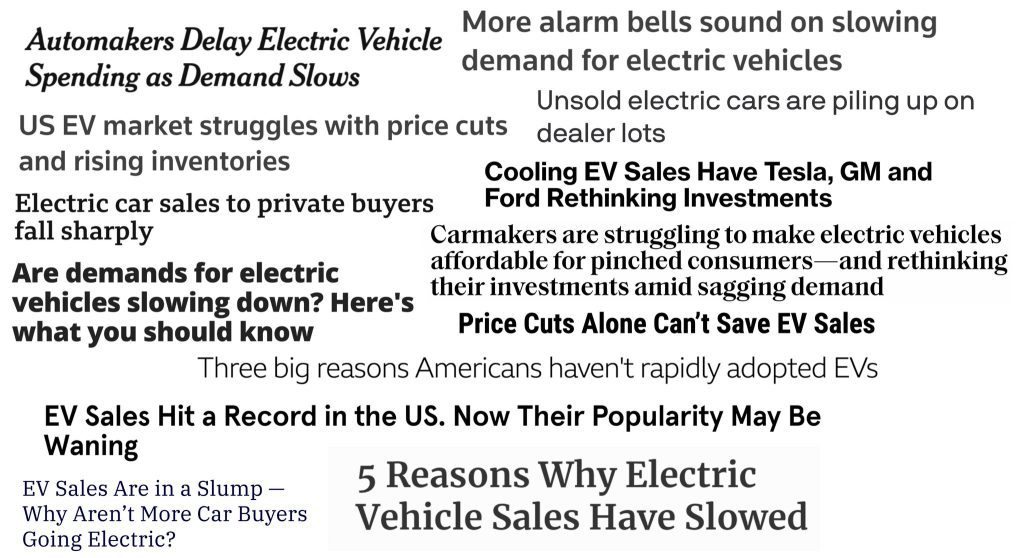
Another point is that if you look at interest in EV’s across Southeast Asia, Europe, and Oceania, there is a sharp dropoff of interest compared to the USA and Canada.
The most surprising dropoff in interest is in the two largest foreign EV makers, Japan and South Korea. This dropoff is driven by some valid concerns and challenges that EV’s face, even thought they have many advantages as well.
Advantages Of EV’s & Hybrids In North America
One of the biggest reasons that EV adoption in the USA and Canada has been so widespread is because the governments of both nations offer significant rebates, discounts, and other incentives to entice you to buy an electric car.
For those not quite ready to give up on the gas side of things, hybrids have also seen a surge in sales as the technology has improved. As well, many hybrids are available in all types of vehicles such as small family cars to gigantic SUVs and trucks, so all the bases are covered there.
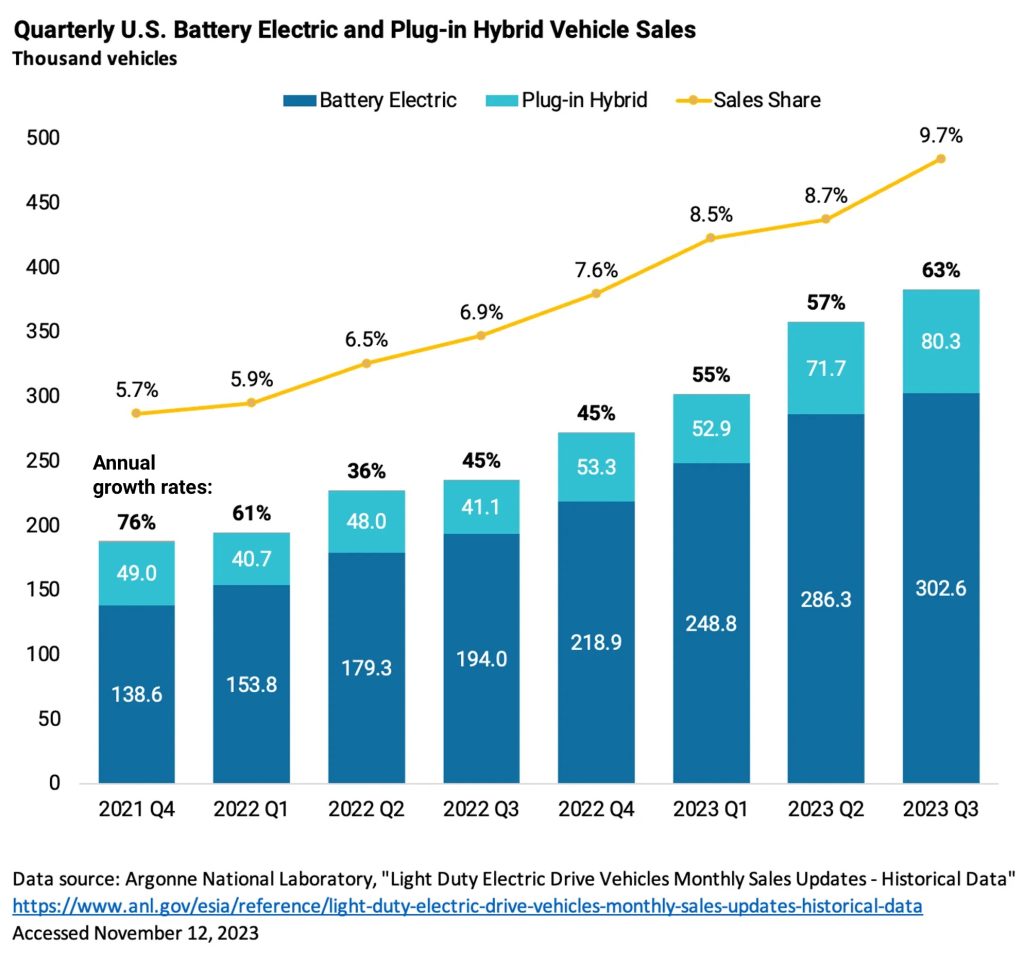
Another key factor in the uptick in EV sales and interest has been environmental awareness. Having less emissions (hybrid) or zero emissions (EV) from the car gives one the sense that they are contributing positively in saving the environment and combating climate change.
It also doesn’t hurt that one of the biggest and most popular manufacturers of EV’s, Tesla, is headquartered in the USA, and their factories are powered by renewable energy whenever and wherever possible.
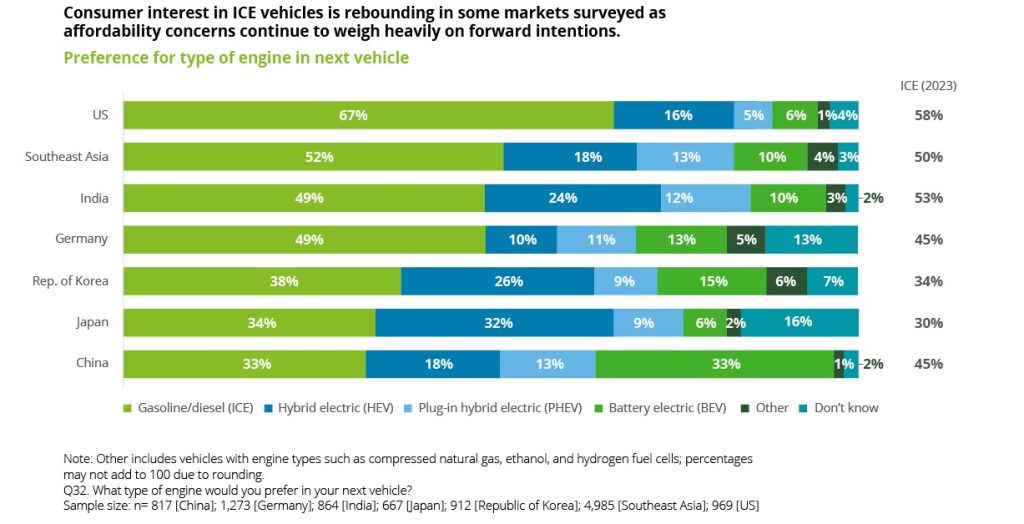
While the news media might be broadcasting that sales and interest in EVs is slowing down, they often neglect to mention that the numbers they are showing are global, not just North America.
Yet, it is something that has started to recently have an economic impact all on its own, with decreased revenues globally for many manufacturers. The biggest question is: Why?
Challenges With EV’s & Hybrids vs ICE Globally
The biggest thing that is affecting interest in almost every country, continent, and market in the world is the speed of charging for EVs. With an ICE or hybrid powered car, you pull up to a gas station, spend maybe 5 to 10 minutes filling your vehicle, and off you go. With an EV, you pull up to a charge station, plug in, and then wait, often up to and over an hour.
Another concern, especially at the global level, is that EV charge stations are a new type of infrastructure, still considered brand new at about 15 years old now.
Petrol stations have been around since the start of the 20th century, so it has matured and its infrastructure is widespread. Even then, with an 800V power circuit inside the car and a supercharger station, it still takes 4 to 10 times longer than it does to fill up a gas tank.
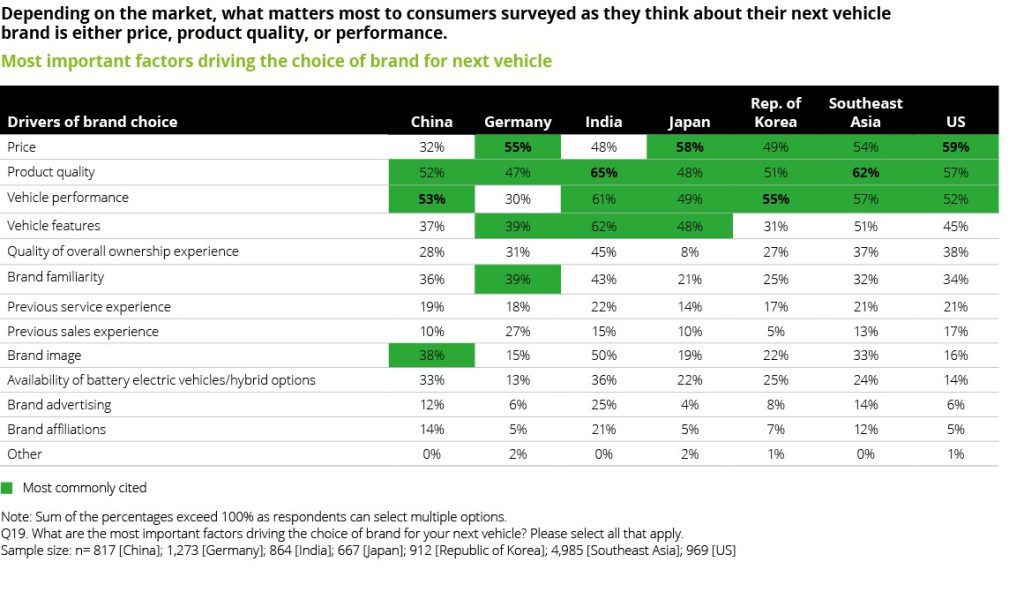
This is particularly apparent in South Korea and Japan. It’s only in the major cities that you’ll find charging stations, and only now are highway and rural charging stations starting to even appear.
Something else is that both nations have extremely well developed public transportation, to the point that if a train is more than 60 seconds late to the station in Japan, you get a little slip of paper explaining why you are late to work!
Another challenge on the global level is temperature performance. An EV can lose up to or over 50% of its normal estimated range in very cold weather, as the batteries need to sap that power to keep themselves warm enough for optimal performance.
The same happens in extremely hot weather, where if there is not adequate cooling, the EV might cut power to reduce load, and in some cases have you pull over and let the batteries and motors cool down.
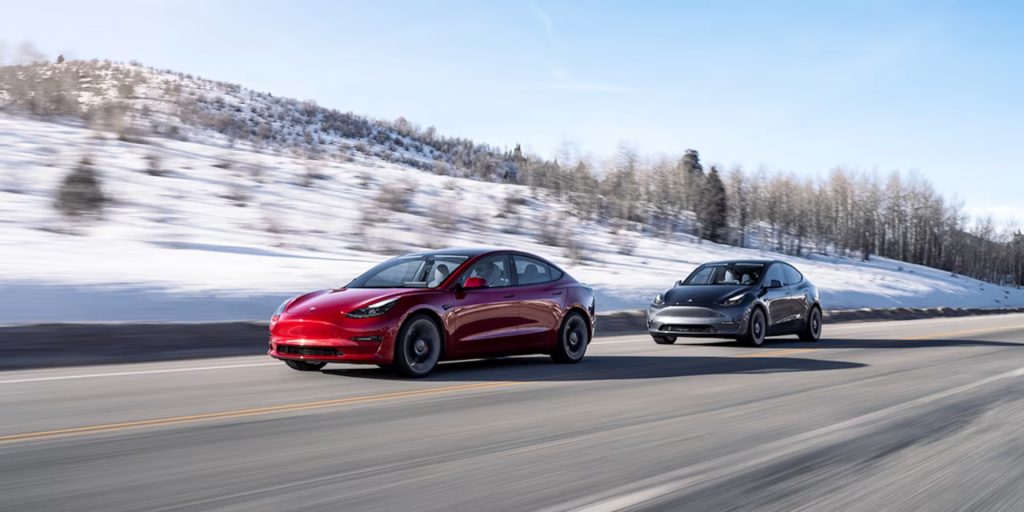
On that note, range has also been a major factor. EV’s are purposefully designed to be very aerodynamic and have a low coefficient of drag, yet the fact remains that battery technology still cannot compete on par with petrol power.
Even in a lightweight car, such as a runabout hatchback like the VW Golf, you can get 400+ miles if you drive with a mind towards efficiency, and the equivalent EV will maybe, maybe get 250 miles if you turn off anything not absolutely necessary for driving.
The finally big challenge with EV’s is that right now, even with government incentives, they are ridiculously expensive. Take the price of the cheapest Tesla car, the Model 3 RWD at $38,990 (at the time of this writing in January 2024), and compare that to one of the most popular “cheap” cars in the world, the Honda Civic.
Even if you sprung for the sporty Civic Si, it’s still only about $30,000 out the door, gets to 60 faster than the Model 3 because it’s much lighter, and gets at least 1.5 times the range of the EV.
The Battle Has Just Begun
It is estimated that hybrid vehicles, including plug-in hybrids and “pure” hybrids, will outpace EV sales for at least another decade, primarily because of the fact that if the electric side fails or has issues, there is still an internal combustion engine to keep going with. Even with the unofficial “Green Promise” that many manufacturers have subscribed to, that of replacing 80% or more of their lineup with EVs or heavily hybridized vehicles, it is still estimated that fully half of the vehicles on the road in North America will be petrol powered in 2050.
This also doesn’t take into account hydrogen fuel-cell cars. While there are cars out there right now that you can buy that are hydrogen powered, that infrastructure is even younger than the EV charging network. However, hydrogen fuel-cells themselves are a fairly old technology, having been the primary power supply for a little space program called the Apollo Moon Landings. As well, fuel-cell cars are even more environmentally friendly compared to EV’s, as their only emission at all is water!
As to which type of powertrain will win overall, as the saying goes, “only time will tell.”

